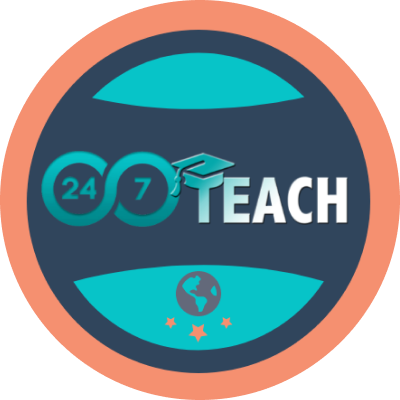Lesson 1: Unraveling Software Engineering - The Crucial First Steps
Prefer to listen to this lesson? Click below.
Decoding Software Engineering - Taking the Essential Initial Strides:
Welcome, budding software engineers! Today, as we embark on the first step of our software engineering journey, we'll dive deep into understanding the core of software engineering and what it means to be a Full Stack Software Engineer. By the end of this session, you'll have a clear grasp of the Software Development Lifecycle and a vivid picture of your future role. So, let's boot up and delve in!
1. The Essence of Software Engineering
First and foremost, what is software engineering? Many confuse coding with software engineering. While coding or programming is a part of it, software engineering is an encompassing field that deals with the systematic design, development, and maintenance of software applications. It's not just about writing code; it's about ensuring that the software is reliable, efficient, and meets the needs of users and businesses alike.
In other words, think of software engineering as building a house. Coding is akin to laying bricks, while software engineering is about architectural planning, ensuring the house stands tall, making it comfortable for residents, and maintaining it over the years.
2. Software Development Lifecycle (SDLC)
One of the core concepts every software engineer should be familiar with is the Software Development Lifecycle (SDLC). The SDLC is a systematic process for planning, creating, testing, deploying, and maintaining software applications or systems. Breaking it down:
Requirement Analysis: This is where we define what the software should do based on user or business requirements. It's like asking the homeowner what they want in their house.
Design: Here, architects and designers sketch the system's architecture. They determine how the software will look and function.
Implementation (or Coding): The actual code is written during this phase. It's the construction phase in our house analogy.
Testing: The software needs to be inspected just like a newly built house. In this phase, it's tested for bugs, performance issues, and more.
Deployment: Once everything looks good, the software is released to the users or deployed in a production environment.
Maintenance: Just as houses need regular upkeep, software applications also require updates and maintenance to address user feedback, changes in the environment, and more.
The beauty of SDLC is that it ensures a high standard of software quality and a systematic approach to developing applications. It's the backbone of software engineering!
3. Role of a Full Stack Software Engineer
Now, where does a Full Stack Software Engineer fit into this picture? Simply put, a Full Stack Software Engineer is a versatile individual skilled in both front-end (the user interface) and back-end (server, database) development. Think of them as master builders who can create both the exterior facade and interior structure of a house.
A Full Stack Engineer can:
Design User Interfaces: Craft the look and feel of a software application.
Develop Front-end and Back-end Logic: Make sure the software functions correctly from both user and server perspectives.
Handle Databases: Store, retrieve, and manage data efficiently.
Manage Servers: Ensure that the software runs smoothly in a live environment.
Being a Full Stack Software Engineer is like wearing multiple hats. You get a holistic view of the entire software development process and play a pivotal role in shaping the final product. It's challenging but immensely rewarding!
4. The Impact of Full Stack Development on Modern Businesses
In today's digital age, every business, regardless of its size or sector, is a tech business. From small local stores with e-commerce websites to major multi-national corporations using vast digital infrastructures, technology drives our modern economy. So, where does Full Stack Development fit in?
Full-stack Stack Engineers offer businesses invaluable versatility. Instead of hiring separate teams for front-end and back-end development, companies can employ a smaller team of Full Stack Engineers who have a comprehensive understanding of the entire software stack. This can lead to faster development cycles, more coherent product designs, and significant cost savings. Moreover, these engineers can quickly switch between different parts of the application, offering solutions at multiple levels and ensuring the final product is cohesive and well-integrated.
Full Stack Engineers and 24/7 Teach
Full Stack Engineers are rapidly becoming the linchpins of the modern tech industry, and their value proposition is evident in businesses like 24/7 Teach. As the digital era continues to evolve, organizations are looking for streamlined, efficient ways to deliver quality software products, and Full Stack Engineers are the answer to this rising demand.
24/7 Teach: A Case Study in Efficiency through Full Stack Engineering
24/7 Teach, a leading name in the digital education space, is a prime example of how businesses can harness the power of Full Stack Engineers. At the heart of 24/7 Teach's success lies its commitment to holistic software development, ensuring seamless user experiences and robust back-end functionalities.
Instead of managing separate front-end and back-end teams, 24/7 Teach has adopted the full-stack approach. This decision allows them to maintain a leaner team, fostering a more collaborative and efficient work environment. With engineers who understand the full spectrum of the software development lifecycle, they have created platforms and services that are both user-friendly and robust in their capabilities.
By leveraging the skills of Full Stack Engineers, 24/7 Teach has achieved:
Rapid Iterations: The ability to make quick changes and updates to their platform, ensuring they remain ahead of the curve in the fast-paced ed-tech industry.
Unified Vision: With a comprehensive understanding of client- and server-side processes, the team ensures that every update or feature aligns with the company's overall vision and user needs.
Cost Efficiency: Instead of investing in larger teams with specialized roles, 24/7 Teach's approach has resulted in significant operational savings, allowing them to redirect funds towards content development, customer support, and other vital areas.
Agile Response: In a dynamic industry like ed-tech, quickly adapting and responding to changing user needs is paramount. Full Stack Engineers at 24/7 Teach can swiftly pivot between tasks, ensuring timely and efficient solutions to emerging challenges.
The Future with Full Stack Engineering
As businesses evolve and the complexities of digital products increase, the value of having a well-rounded team becomes even more pronounced. 24/7 Teach is a testament to the myriad benefits of integrating Stack Engineers into the core of a company's development strategy. Their success story provides a roadmap for other businesses navigating the digital landscape, highlighting the importance of versatility, adaptability, and a comprehensive approach to software engineering.
In conclusion, as the lines between front-end and back-end development continue to blur, Full Stack Engineers' role becomes increasingly essential. Organizations like 24/7 Teach that have recognized and embraced this shift are reaping the rewards for efficiency, agility, and overall business growth. The future, indeed, seems Full Stack.



